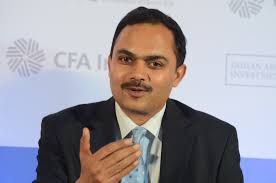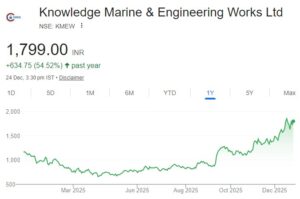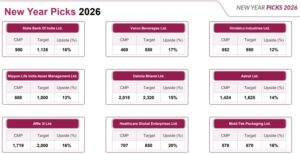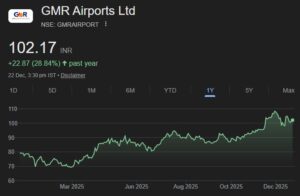
The task of a fund manager in a mutual fund is a difficult one. One is under constant pressure to out-perform the benchmark indices. The amounts at stake run into thousands of crores. Investors are very fickle and fidgety. Even a slight under-performance is sufficient for them to shift loyalties and jump ship.
Prashant Jain has a distinguished career as a stock picker. However, some of his recent contra stock bets have flopped. The resultant under-performance of his funds has created pressure on him. The Fund suffered the ignominy of being downgraded and put “under watch” by Mint 50, an influential newspaper.
In his latest talk, Prashant Jain reminded the distinguished audience of the stellar performance of the HDFC Mutual Fund. He emphasized that while the Sensex has given a return of only 7x in the past 21 years, the HDFC Mutual Fund has given a stunning return of 40x in the same period.
The essence of Prashant Jain’s defense is that markets move in “cycles”. He explained that a cycle is formed every six to eight years and it is common for specific sectors to become the darling of the market and for the leaders therein to reach bubble valuations even as the stocks in other sectors languish.
For example, in the period from 1986 to 1992, the old economy stocks did very well (e.g. ACC went up 30x). This was followed by the Tech boom (till 2000, when Infosys went up 600x), and then the capex boom (till the Lehman crises of 2008) and then the FMCG, Pharma etc boom, which is continuing as of date.
The cycle of six to eight years, which started in 2008, is about to come to an end, Prashant opined.
The impact of this change in the cycle means that small and mid-caps in the consumption/ export businesses will go out of favour and the warhorses of the old economy will ride back to power, Prashant added.
As a corollary to his point about ‘market cycles’ Prashant Jain complained that it is not fair for investors to judge a mutual fund from the perspective of a short period of 1, 3 or 5 years because of transitional issues but one has to take an entire cycle into account to determine the real performance of a fund manager.
Prashant Jain produced data to prove that his fund is always trying to be “ahead of the cycle”. While this causes pain in the short-term, it “more than makes up” in the next few years, he emphasized.
The important takeaway from Prashant Jain’s talk is that the cycle is on the cusp of a change and that consumption and export oriented stocks (i.e. FMCG and Pharma) will fall out of favour and large-cap/ capex oriented businesses will become the darlings of the market.
Now, if you are wondering which are the “large-cap/ capex oriented businesses” which will become the darlings of the markets in the foreseeable future, you can peep into the HDFC Equity Growth Fund, which is personally managed by Prashant Jain. The old warhorse stocks like ICICI Bank, SBI, L&T, Tata Motors, BPCL, Tata Steel, Grasim, Bharti Airtel etc rule the roost here.
So, if you are a believer in Prashant Jain’s theory of market cycles and are convinced that the cycle will turn, this is the ripe moment to position yourself in the old economy stocks when they are going a-begging. Then, if and when the cycle does turn, you can also bask in great riches and pat yourself on the back for masterful stock picking!






I wish Parshant Jain is right as I have large bet on his funds.
There is no such things as mid caps will be out of favor. It is always stock specific. If some large caps will move up, doesn’t mean entire pack will be multibaggers. Likewise, if some mid caps are in to doldrums, does’nt mean all will fall. It is very evident that when market sentiments change, mid caps are the first to react. Once the sentiment (which never lasts long) halts, it is all about value. If a company is trading at a discount to its intrinsic value, it will reach to that. regardless of large cap or mid cap.
It is also pertinent to note that once the fund reaches a very large AUM (HDFC Equity Fund has an AUM of almost 14,500 crores), it becomes a big giant. Warren Buffet faces a similar dilemma. There could be smaller interesting stories that give great returns in percentage but negligible returns for funds with large AUMs.
A smaller nimbler fund might be able to cash in on smaller stories and outperform the giants.
I think it is more with accuracy of calls.HDFC funds took calls in corporate lenders like ICICI bank ,SBI bank which fails .If they could have taken call on private sector reatil lenders like HDFC bank,Indusind bank and Kotak bank.They also went underweight on Pharma. Similarly they sold out FMCG too early and invested in industrials and cyclical too early.Similarly they remains under weight in Pharma.To concluding by being over weight in private lenders and cyclicals and being under weight on retail lenders,FMCG and Pharma proved wrong,this has nothing to do with fund size.All compnies in FMCG,Pharma and reatil Banks are quiet large which could have taken investment of even big funds.
Generally I observed that once fund have large AUM, performance start becoming mediocre…. It is alyas better to be with fund of medium AUM according to its category
Yes, I have also observed the same thing as soon as AUM becomes huge under-performance starts
You can’t bet on underperformers. In corrections ICICI, SBI, other cylicals have got beaten more. This clearly indicate that no bull market is starting in this stocks. rather FMCG, pharma, quality banks remain strong.
Bull market starts in stocks which are fallling less or stable, not in stocks which are tanking as if no other day.
Also see th earnings , NPA issues of such ICICI, SBI. Nowhere secular bull market can start in such poorly managed company. Only a bounce back can be expected.
Nonsense. Absolutely nonsense. This is a guy who first said one plus one equals two. Now he is saying, maybe 1.5 + 0.5 equals 2. If one strategy doesn’t work, then another will. How can he be given credit for such ludicrous speech. Explain why this change will happen then maybe someone will take you seriously.